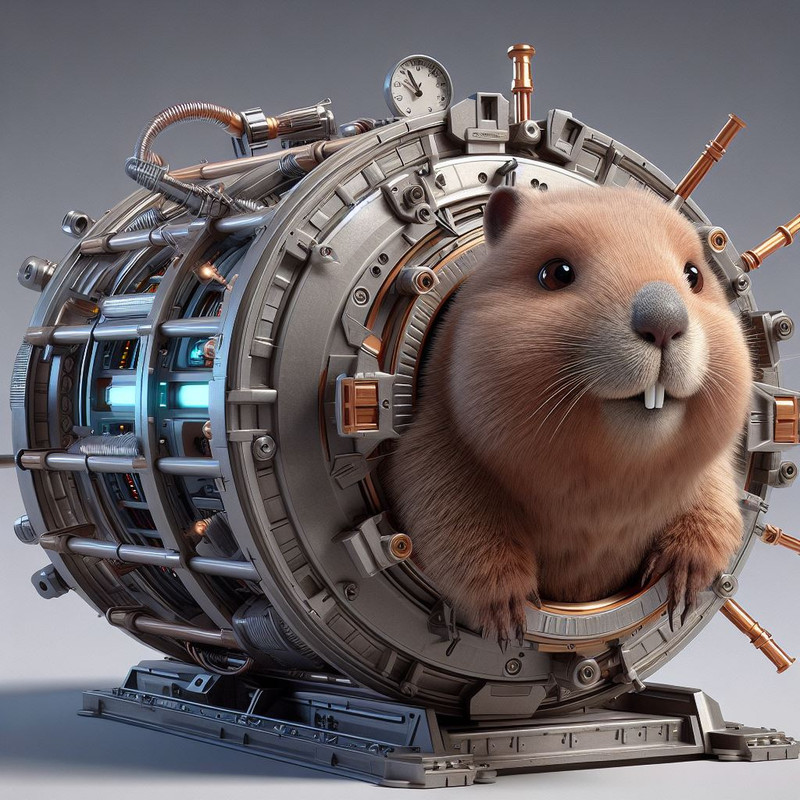This solar flare would have possibly have been interesting if it was pointed this way:
I’m not an expert, but “X-ray aurora” sounds like something I’d rather experience from a different planet.
The goggles! They do nothing! Arrrghhhh!!1!
Sounds like science fiction.
The picture of their “device” is AI-generated nonsense. I am… not confident in their claims.
A discussion on / .
Here’s their press release:
One big “that’s funny” thing: they claimed they acquired Miles Space and hired Wes Faler as their CTO. I actually worked with these guys years ago (circa 2017) on the Team Miles cubesat that launched on Artemis I.
I was helping with their comms, putting together some code to support Turbo Codes. Long-range, error resistant comms was a primary goal of the mission. Don’t think they ever used any of my work, though. Lost contact after a while.
Anyway, allegedly they’re injecting boron into the exhaust of their ion thruster and claiming that it causes fusion and enhances thrust. I am more than dubious. proton-boron fusion needs ion energies of around 600k eV, which for a proton is around 11 million meters/sec (3% of c). But a typical ion engine is more like 50 thousand m/s exhaust velocity. So they’re off by 2-3 orders of magnitude.
They say they measured an increase in thrust… but that’s almost certainly just due to the extra propellant. Injecting stuff into hot exhaust increases thrust–that’s not a surprise. The trick is to do it while increasing specific impulse.
They say they measured fusion events–well, maybe they could have detected some infinitesimal amount of fusion going on, but there’s no way it contributed meaningfully to the energy output.
I choked when I got to 'aneutronic fusion created by injecting boron into the thruster exhaust." Aneutronic fusion is really difficult, way harder than the typical fusion we’re trying to harness for power. Petawatt lasers are needed in the attempt to create aneutronic fusion.
Who knew you could just throw a little boron into the exhaust and hey presto?
Well, fusion–even aneutronic–isn’t quite that hard. Just get a proton accelerator that can achieve 600 keV (not that hard) and shoot it into a boron target. You’ll get some fusion.
It’s just that this level of fusion is useless for anything but experiments. The accelerator will use far more energy than you gain from the fusion for a variety of reasons.
But an ion engine doesn’t even achieve that, since it doesn’t achieve even a tiny fraction of c. So yeah–pretty much on par with cold fusion claims. Tunnelling allows you to be a bit below the coulomb barrier, but not by 3 orders of magnitude.
But it’s special boron, which has been prepared by their proprietory process…
It’s homeopathic boron. At that dilution they avoid all the pesky hazards associated with actual boron in macroscopic quantities and concentrations.
There’s gotta be some quantum effects in there somewhere to make it really sciency. Or, someone finally tried reversing the polarity on the ion drive, creating a wormhole that contains the fusion. Yeah, that’s it.
Somehow I read this
as
Or, someone finally tried reversing the polarity on the ion drive, creating a wombat that contains the fusion.
It made just about as much sense my way as Sam’s way.
The whole press release / article is nothing but Treknobabble. Well-played there @Sam_Stone.
Flying with a fusion-containing wombat makes exactly as much sense as Star Trek Discovery’s “spore drive”.
That looks more like the fusion contains the wombat.
But it’s still funny. Thank you!
Clearly we need to do a lot of work on wombat genetic engineering. To create one which lives in space with a metabolism based on fusion (or maybe even direct mass-energy conversion).
Of course there have been quite a few such entities over the Star Track catalog history…
Wombat pouches are rear-facing, so there’s plenty of opportunity here for maintaining their cuteness while keeping all the, er, plumbing, out of sight.
But the $64,000 question: do space wombats still poop in cubes?
‘Wombat poop: Scientists reveal mystery behind cube-shaped droppings - BBC News’
That looks like a wombat in an iron lung. It also looks way too pleased with itself for being there.
What they need to do is reverse the polarity of the wombat’s flux capacitor.
